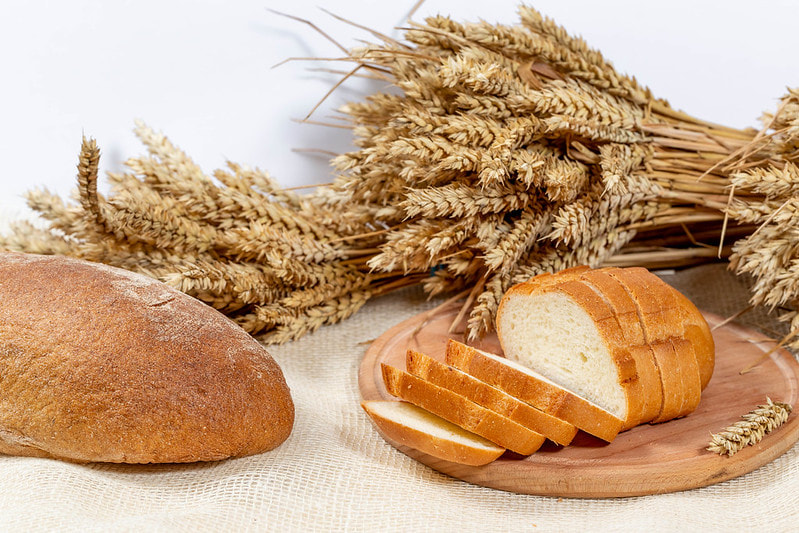|
Shavuot (The Feast of Weeks) was one of the festivals where God required the Israelites to go to the Temple to present Him with an offering. "Count off 50 days up to the day after the seventh Sabbath and then present an offering of new grain to the Lord. From wherever you live, bring two loaves made of two-tenths of an ephah of fine flour, baked with yeast, as a wave offering of firstfruits to the Lord." (Leviticus 23:17) "When you have entered the land the Lord your God is giving you as an inheritance and have taken possession of it and settled in it, take some of the firstfruits of all that you produce from the soil of the land the Lord your God is giving you and put them in a basket. Then go to the place the Lord your God will choose as a dwelling for His Name." (Deuteronomy 26:1-2)
Two offerings are given during the Feast of Weeks--what the Greeks called Pentecost. The firstfruits offering was to thank God for His bounty and is the word Bikkurim in Hebrew. The fruits to be placed in the basket, talked about in Deuteronomy, included the seven species of Israel: wheat, barley, grapes, figs, pomegranates, olives, dates. It took the Israelites seven weeks to travel from Egypt to Mt. Sinai where God confirmed His covenant with them by beginning to give them Torah. So, Shavuot became a duel celebration: One to thank God for the harvest and one to thank Him for the 10 Commandments. It also celebrates the renewal of their commitment and dedication to God. If we compare the offering of Passover with the Offering of Shavuot, we see a distinct difference. Yeast was strictly forbidden during Passover. "Celebrate the Feast of Unleavened Bread, because it was on this very day that I brought your divisions out of Egypt. Celebrate this day as a lasting ordinance for generations to come. In the first month you are to eat bread made without yeast, from the evening of the 14th until the evening of the 21st day." (Exodus 12:17-18) As we see in Leviticus 23:17, the Israelites were to bring two loaves of bread, "baked with yeast, as a wave offering of firstfruits to the Lord." Why do you think yeast, or leaven, was allowed in the second feast when it was not allowed in the first? May I make a suggestion? The focus of Passover was the sacrifice of the pure and spotless lamb. God would send His Son years later so that Believers could see that He is the pure and spotless Lamb without sin (leaven). However, during Shavuot God was preparing His chosen people to receive into their fold Gentiles who would follow Jesus/Yeshua. The Israelite community looked at the Gentiles as sinful--full of leaven. Could the two loaves of bread containing yeast represent the Jew and Gentile? The disciple Luke wrote about a time when Jesus was trying to explain what God's kingdom looks like. Jesus said, "What shall I compare the kingdom of God to? It is like yeast that a woman took and mixed into a large amount of flour until it worked all through the dough." (Luke 13:20-21) Those who know their Messiah are to "infect" the world around them with the love of God to bring them into the Kingdom of God. The love of God is for everyone; God's kingdom is all inclusive. So, God chose Shavuot to demonstrate the power of His Kingdom by bringing the Holy Spirit into the lives of those who were waiting in Jerusalem. Three thousand were added to their number in one day. (Acts 2:41) The book of Acts reveals to us how God began to bring the Gentiles into His family. Saul, who became Paul, had a ministry to the Gentiles, and Peter was given a vision confirming that God intended to transform pagans, so they became members of His Kingdom. (Acts 10:27-35) Today, Sunday, Jew and Gentile are celebrating Shavuot or Pentecost. Let us join the celebration as we have been marked to join the Kingdom of God. Let us cry out for a fresh infilling of the Holy Spirit to empower us as those who were empowered on the day of Pentecost. |
Joan E. MathiasCategories
All
Archives
July 2024
|

 RSS Feed
RSS Feed